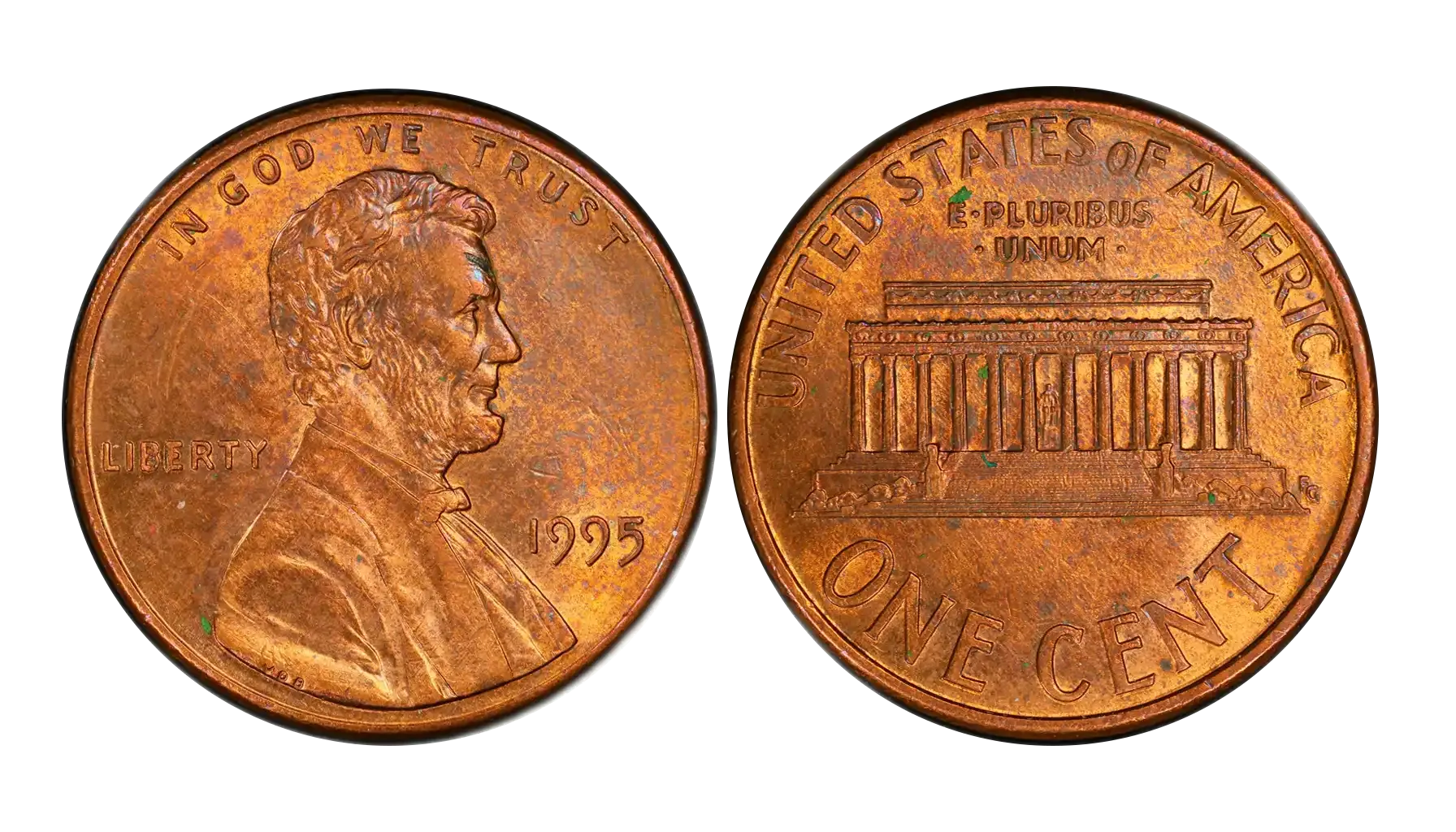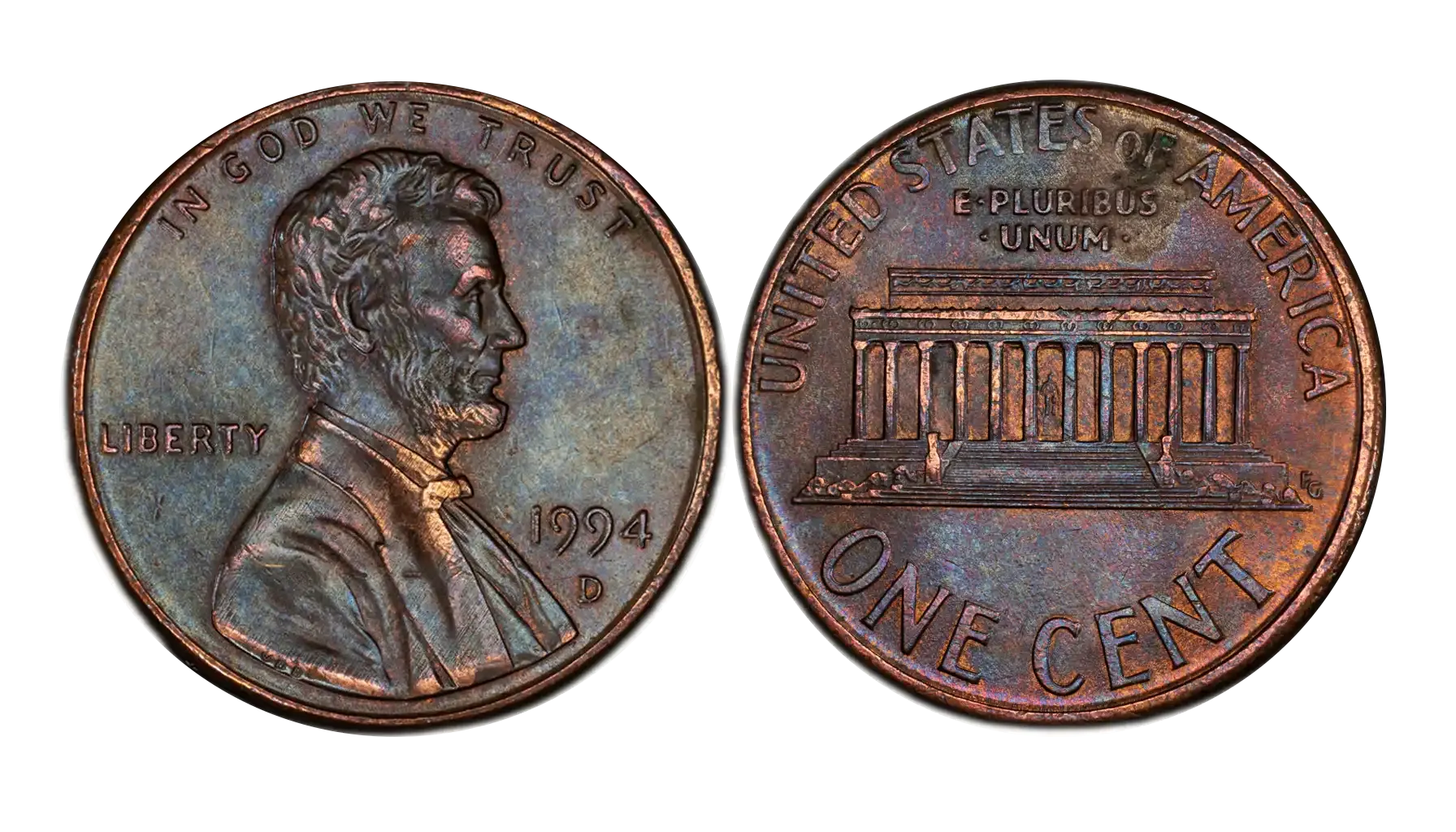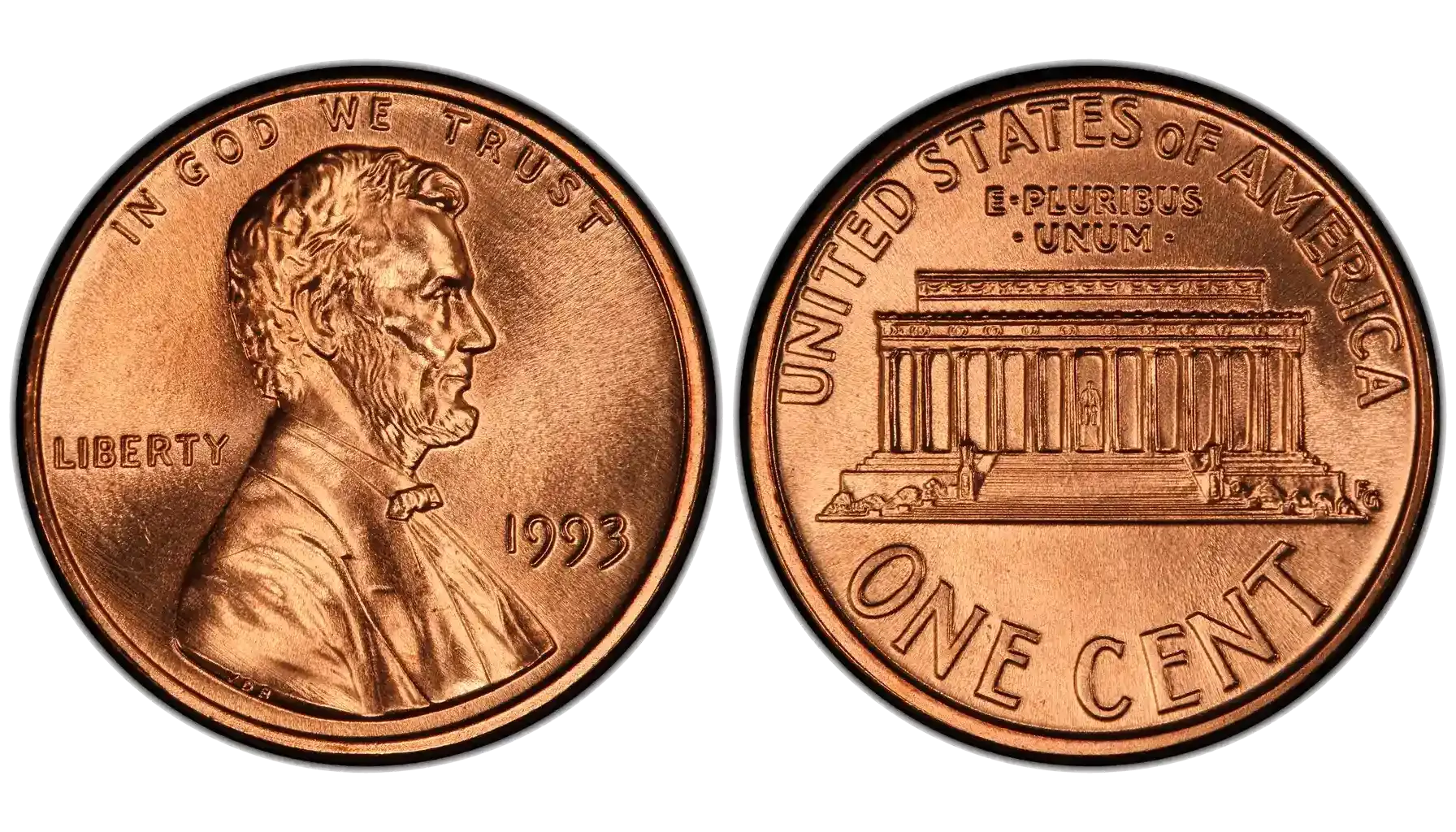Contents:
The $500 bill, also known as the 500 dollar bill, is a pretty rare piece of U.S. currency history. It’s no longer in circulation, which makes the cost go higher, especially if you have rare pieces. Today, surviving examples are highly collectible, with values far exceeding their original face value.
To know how much your $500 Bill costs, we recommend you to download the online coin identifier app. It’s powered by artificial intelligence, so you will know the approximate cost of your coin immediately. But for the more detailed answer we still recommend you to go and check the bill by the professional collectors.
History of the $500 Bill
The $500 bill was first issued by the U.S. federal government in 1861. It was during a time when large-denomination currency supported major financial operations, particularly between banks. Whos on the 500 dollar bill? Early versions had different figures, like Chief Justice John Marshall in the 1918 series.
The most recognized version, however, is of 1928 release, which was reissued in 1934. The 500 dollar bears the portrait of the 25th U.S. president, William McKinley. This version remained in limited use for decades before the U.S. Treasury officially discontinued the $500 bill in 1969, citing a "lack of use." Although the note was last printed in 1945, it wasn’t formally withdrawn from circulation until decades later.
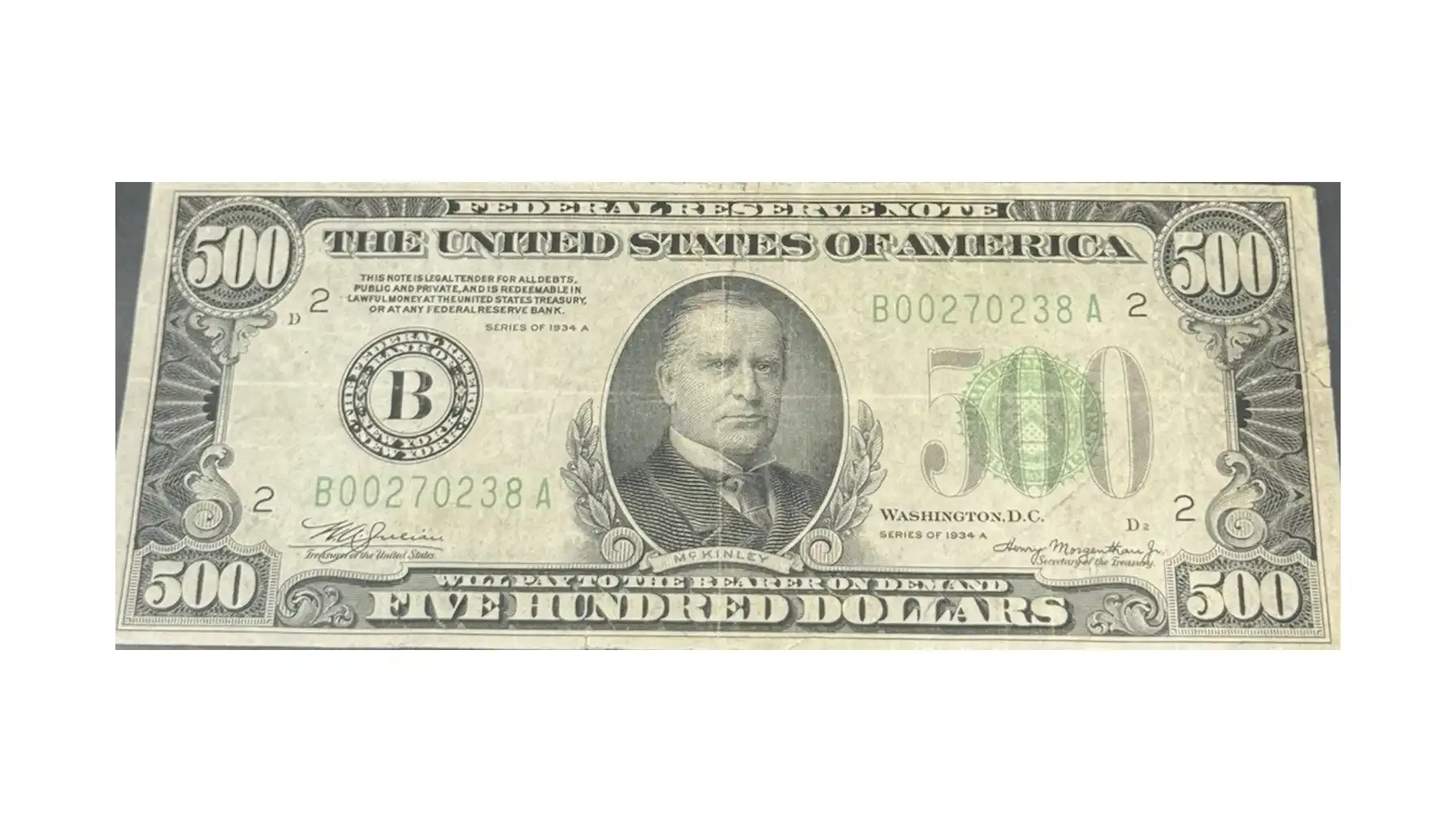
Why William McKinley?
William McKinley was chosen to appear on the $500 as a tribute to his leadership during one of the most significant periods in U.S. history. He served as the 25th president from 1897 until his assassination in 1901.
A former congressman and governor of Ohio, McKinley was a supporter of protective tariffs and the gold standard. These policies helped business leaders and the growing middle class of his time. His administration is best remembered for leading the nation through the Spanish-American War in 1898, and overseeing the annexation of Puerto Rico, Guam, and the Philippines. This president expanded U.S. influence abroad. His death at the hands of an assassin just months into his second term shocked the nation and solidified his legacy as a martyr of American progress.

Before McKinley, the earlier 1918 $500 Federal Reserve Note featured Chief Justice John Marshall. Appointed by President John Adams, Marshall served as the fourth Chief Justice of the United States from 1801 to 1835—the longest tenure in the Court’s history.
Marshall established the Supreme Court’s role as an equal branch of government. His decisions laid the groundwork for constitutional law in the U.S. and strengthened federal power during a formative time in the nation’s development.
The 1918 $500 note featuring Marshall, often referred to as the “Blue Seal” note, was issued primarily for interbank transfers and other large-scale financial operations. The reverse of the note depicted the scene “De Soto Discovering the Mississippi”.
Characteristics of the $500
Portrait | William McKinley |
Obverse Design | Portrait at the center with ornate borders and large numerals |
Reverse Design | Simple, bold “500” in large font |
Dimensions | 6.14 x 2.61 inches (same as modern U.S. currency) |
Seal Color | Green (Federal Reserve Note, 1934); earlier notes featured blue or red seals |
Serial Numbers | Printed in green ink; vary by issuing district |
Series Dates | Most surviving bills are from 1928 or 1934 series |
Paper | Cotton-linen blend used for most U.S. notes |
Why Were $500 Bills Created?
High-denomination bills like the $500, $1,000, $5,000, and $10,000 were created to manage large-scale financial transactions, especially between Federal Reserve banks. In an age before electronic transfers, moving vast sums of money between banks required paper currency.
These bills were not intended for general circulation. They were rarely seen in the hands of average Americans, and even fewer people used them in everyday commerce. Instead, they had a specialized role in the U.S. banking system, helping banks settle balances.
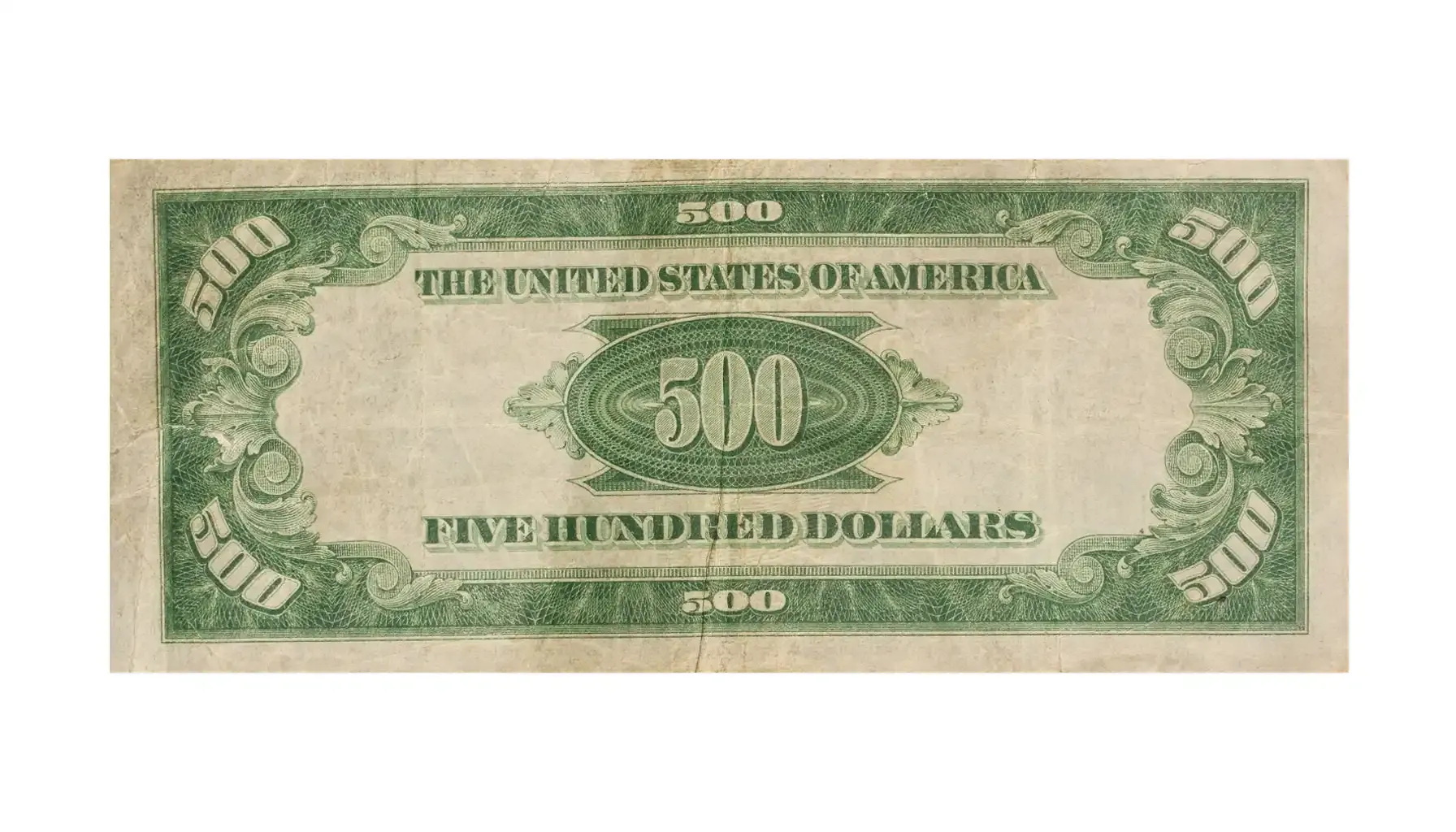
The Decline and Discontinuation
After World War II, wire transfers and check-based transactions became the norm. So there was no need for large denominations like the $500 bill. Moreover, the U.S. government grew concerned about their use in illegal activities, such as money laundering and organized crime.
On July 14, 1969, the Department of the Treasury and the Federal Reserve officially announced the discontinuation of all bills above $100. From that point forward, financial institutions were instructed to send any large-denomination notes back to the Treasury for destruction.
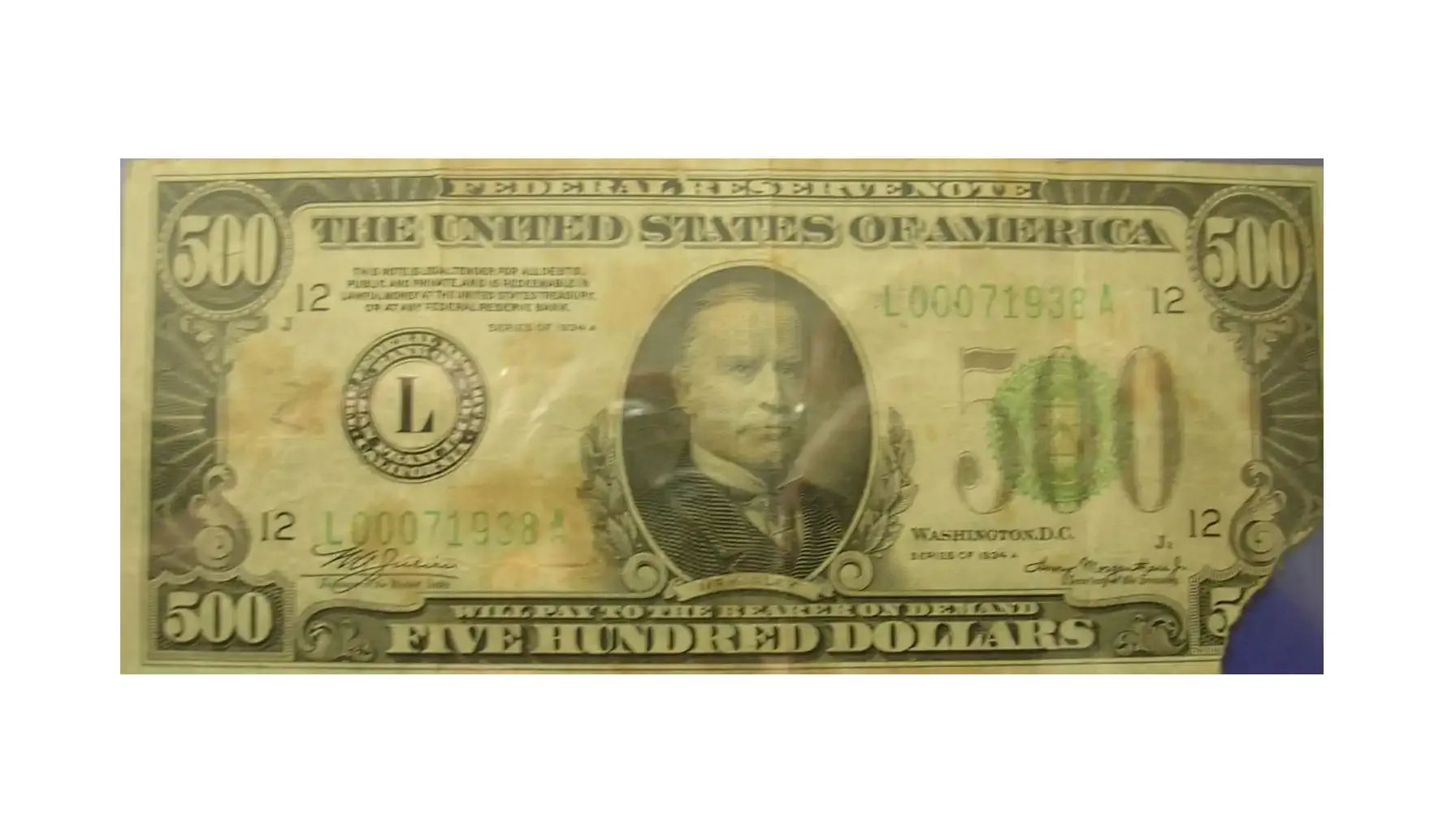
Are $500 Still Legal Tender?
Yes, the $500 bill is still considered legal tender in the United States. That means, in theory, you could walk into a bank or retail store and use one to make a purchase. In practice, however, this rarely happens.
Due to their rarity and value on the collector’s market, $500 bills are not typically spent as currency. You can find a $500 bill for sale, but most have found their way into private collections, museums, or safe deposit boxes. Using one for a $500 transaction would be like paying for a soda with a vintage Ferrari. What is more wild, is to make a Dollar Bill Origami out of this bill. But if you have some less valuable bills, why not?
Collector Value and Current Prices
How much is a 500 dollar bill worth? Although the $500 bill’s face value is, of course, $500, its market value is far higher. Several factors influence the current price:
Series and seal color. Green seals from 1934 are more common than 1928 versions. Blue-seal 1918 notes are rarer and more valuable.
Condition. Crisp Uncirculated (CU) and About Uncirculated (AU) notes can be worth significantly more.
Serial numbers. Fancy serial numbers (e.g., repeating digits, low numbers) increase value.
Issuing bank. Notes issued from certain Federal Reserve districts may command premiums.
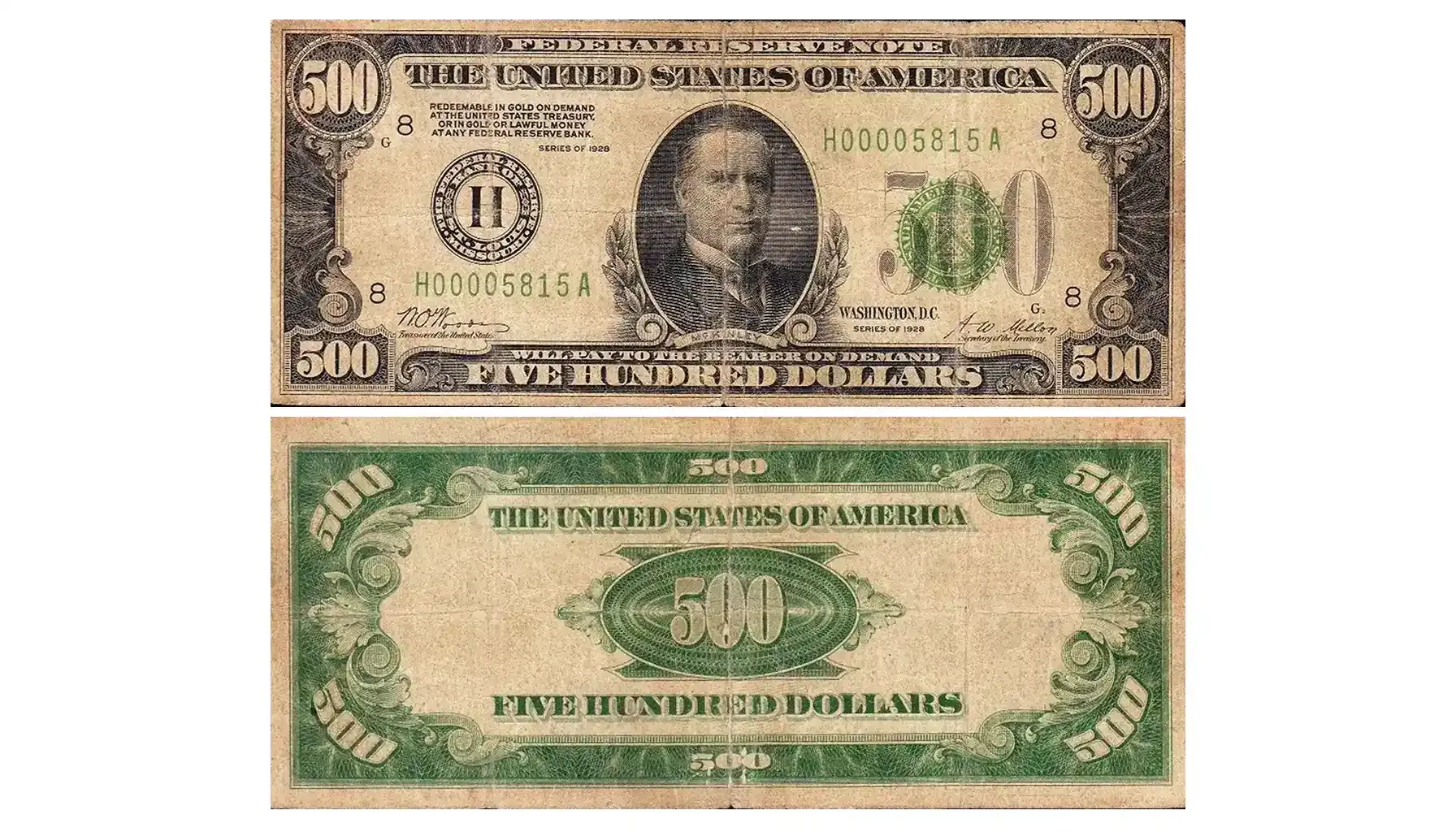
Where to Find or Sell a $500
If you're looking to buy, sell, or appraise a $500 bill, here are your best options:
Reputable auction houses. Places like Heritage Auctions or Stack’s Bowers specialize in high-end currency. They offer expert grading, authentication, and exposure to serious collectors.
Online marketplaces. eBay has dozens of listings for $500 bills, but buyer caution is advised. Make sure listings come with clear images and certification when possible.
Numismatic dealers. Local coin dealers or national dealers with currency expertise can help appraise your bill or offer it for sale.
Currency shows. Currency and coin conventions offer in-person opportunities to evaluate, trade, and sell rare notes.
Professional grading services. Consider submitting your note to PMG (Paper Money Guaranty) or PCGS Currency for grading and encapsulation, which may increase its marketability and value.
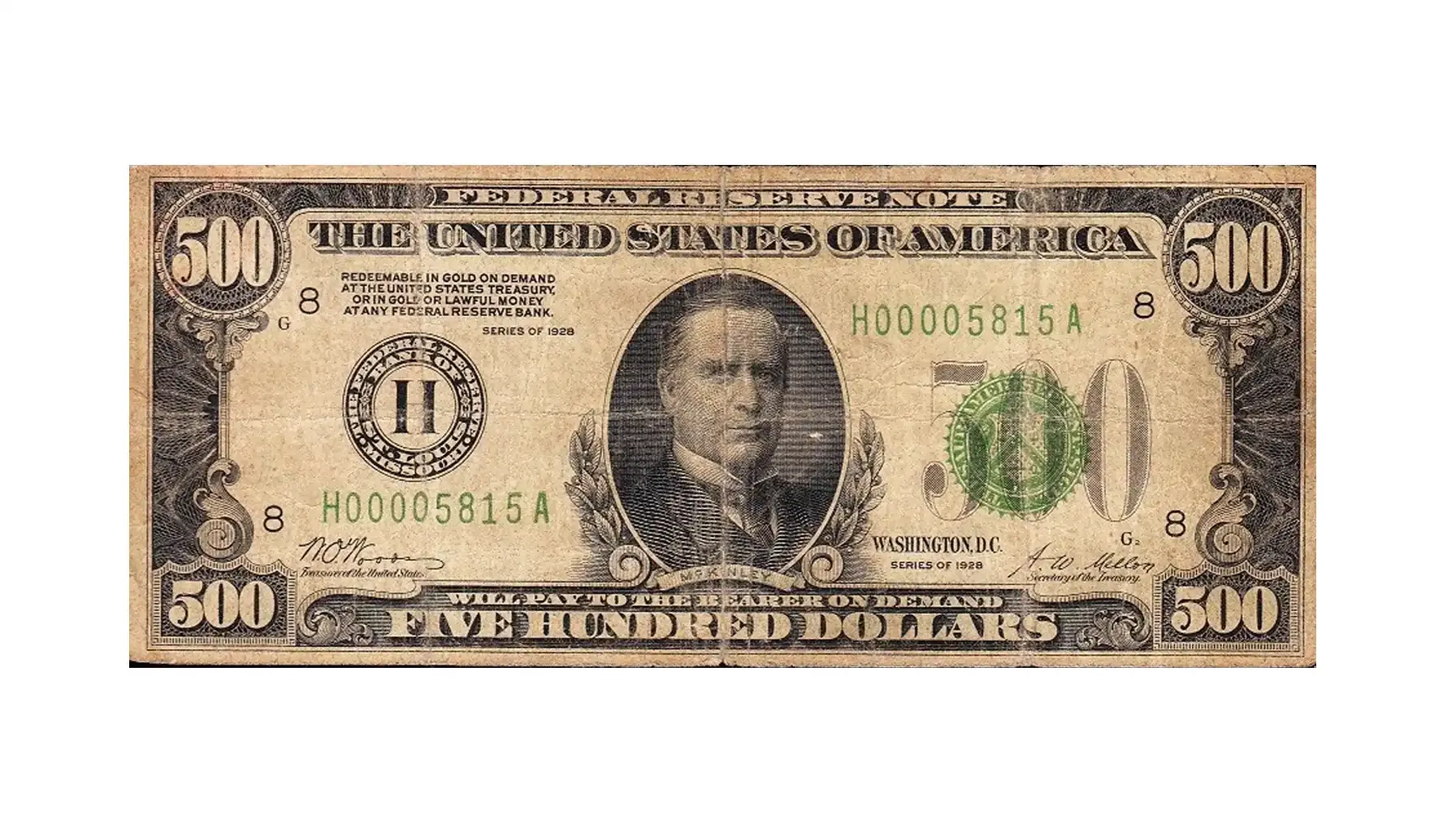
Tips for Collectors and New Enthusiasts
The grading scale typically ranges from Good (G) to Gem Uncirculated (GEM UNC), with higher grades commanding exponentially greater prices. A Very Fine (VF) note might fetch a few thousand dollars, while an Extremely Fine (EF) or Crisp Uncirculated (CU) note could reach $10,000 or more.
Grading takes into account multiple aspects of the note's physical state.
The crispness of the paper is one of the most important indicators.
Uncirculated notes should feel firm and original, showing no signs of folds, bends, or handling.
Color is also key; bills should maintain strong ink without fading or patchy tones.
Edges and corners must be clean and intact, with no tears, fraying, or rounded edges that suggest wear.
Any kind of damage, such as stains, adhesive tape, or handwriting, usually knocks down a note’s grade significantly and can lower its desirability among collectors.
Now, what’s important: because of these strict standards, even a single bump in grade, say, from VF to EFcan increase a $500 bill's value by hundreds or even thousands of dollars. For this reason, collectors often turn to professional grading services like PMG or PCGS Currency. Grading is useful when selling a high-value note like the 1934 A $500 dollar bill. Having an authenticated and graded $500 bill removes doubts for both buyers and sellers.
Another essential tip: never clean your $500 bill. While it might seem helpful to remove dirt or blemishes, cleaning a banknote can damage the paper, erase original ink, or leave visible fibers and scratches. This instantly reduces the grade and value, especially for rare issues like the 500 hundred dollar bill or 1934 green seal notes. If preservation is your goal, keep the bill in a protective sleeve away from direct light, heat, or moisture, and handle it only with cotton gloves.
Collectors asking, “Is there such a thing as a $500 bill?” are often surprised to find that yes, not only is there a $500 bill, but it’s also a treasured item among numismatists. The average person may never encounter one, but the US $500 dollar bill has become a sought-after collectible with a strong secondary market.

Design Features and Variants
Although the real 500 dollars looks visually similar to other U.S. notes of its time, it contains some unique elements. On the obverse, a portrait of President William McKinley occupies the center. A green Treasury seal is located to the right, standard for the 1934 series. The large “500” numerals appear boldly in the corners.
Other identifying marks include the issuing Federal Reserve Bank, marked by a unique letter and city name. For example, a note from the New York Federal Reserve Bank will carry the letter “B.” The serial numbers are printed in green ink and differ depending on the issuing bank. And while the layout is consistent, some subtle differences such as seal placement or printing clarity exist between the 1928 and 1934 series.
So, what does a $500 bill look like today? It's the same size as modern U.S. currency, measuring 6.14 x 2.61 inches, but the design elements give it a more historic feel.
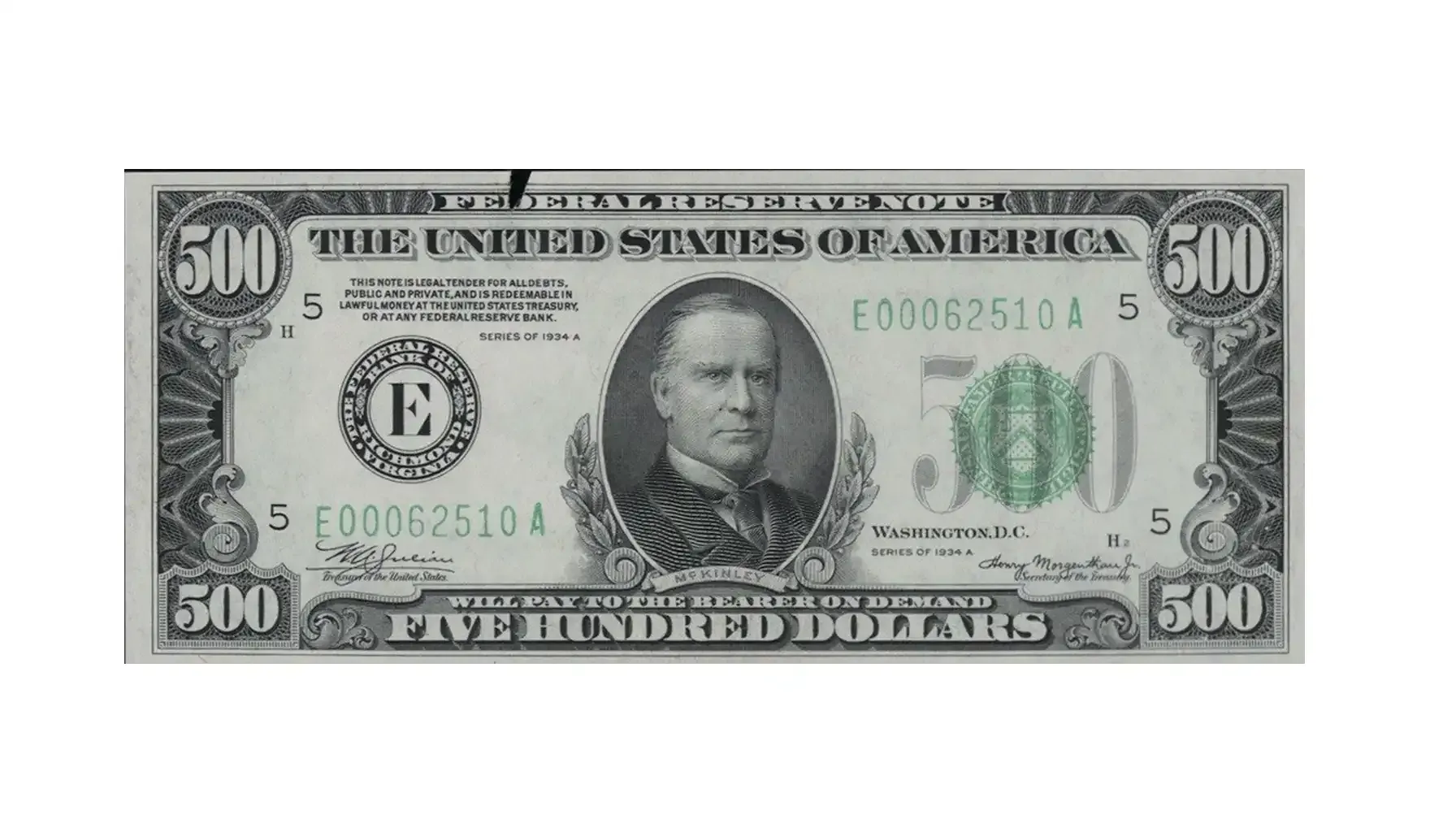
Fast Facts About the $500 Bill
The $500 features only deceased individuals, in keeping with U.S. currency policy.
The last $500 bill was printed in 1945, and it was officially discontinued in 1969.
People often ask “can you get a $500 dollar bill from the bank?” Technically yes, as it’s still legal tender, but banks rarely have any.
As of 2025, fewer than 75,000 $500 bills are believed to remain in private hands.
A pristine $500 bill has sold for more than $20,000 in recent auctions.
The question “is the 500 dollar bill real” comes up often—yes, it is, but it’s now considered obsolete.
You can read more about Paper Money Errors to see if your 500 dollars are even more unique.
Other common questions include “is there a $500 bill?” and “who’s on the $500 bill?”—both answered by the iconic McKinley design.
The Legacy of High-Denomination Currency
The 500$ belongs to a now-discontinued family of large notes that includes the $1,000, $5,000, and $10,000 bills. While they were never common in general circulation, but were important for institutional banking and federal operations.
Many people still wonder, “is there a $500 bill in 2025?” and the answers depend on condition, rarity, and serial number. Serious collectors can find a $500 dollar bill for sale through auctions, specialty dealers, and sometimes even on online platforms. Prices vary, with more common examples selling for under $2,000 and rare CU notes or 1918 versions exceeding $30,000.
The US 500 dollars is a symbol of a transitional moment in American banking history. It represents a time when physical currency handled the work of digital wire transfers and when denominations matched the scale of industrial growth.
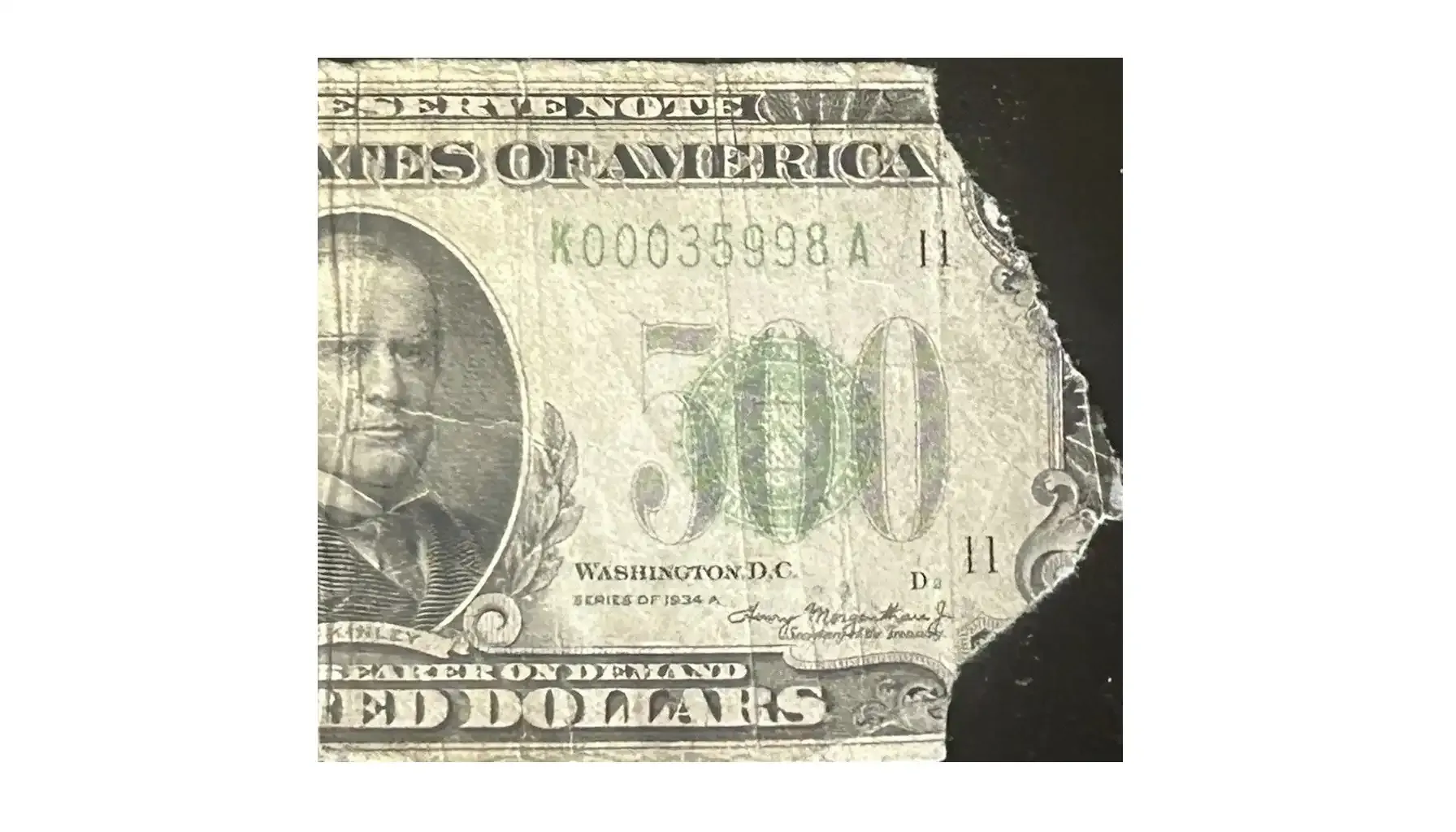
So, is a 500 dollar bill real? Yes. And while you probably won’t see one in your wallet, knowing about who's on the 500 dollar bill or what president is on the $500 bill connects you to an important part of U.S. economic history.
And to answer those last curiosities: yes, there was a $500 dollar bill, yes it's real, and yes, you can still own one if you're lucky enough to find one in the wild.
If you’ve just searched “is there a 500 dollar bill”, there’s no denying the allure of this note. The 500 dollar bill for sale at auctions today represents a preserved chapter of American financial heritage.

